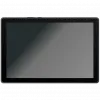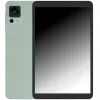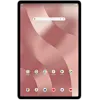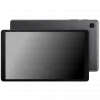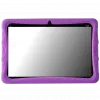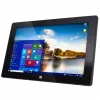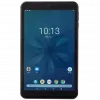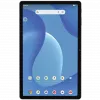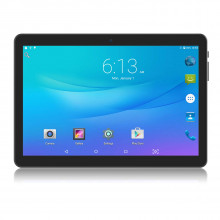
A tablet computer, or simply tablet, is a one-piece mobile computer. Devices typically have a touchscreen, with finger or stylus gestures replacing the conventional computer mouse. It is often supplemented by physical buttons or input from sensors such as accelerometers. An on-screen, hideable virtual keyboard is usually used for typing. Tablets differentiate themselves by being larger than smart phones or personal digital assistants. They are usually 7 inches (18 cm) or larger, measured diagonally.
